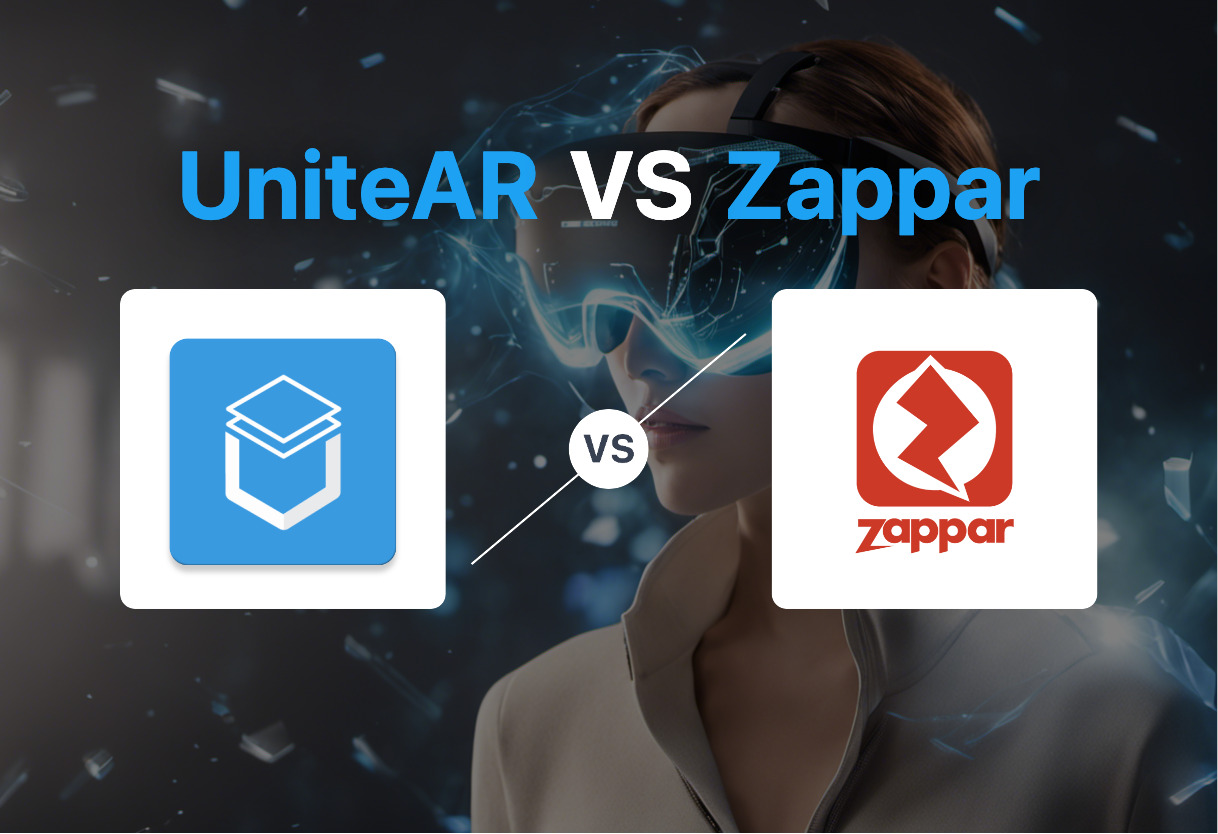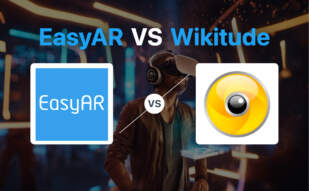For quick and customized AR experiences with no coding required, UniteAR gets the nod. However, Zappar shines for those seeking end-to-end XR strategy with advanced coding capabilities and industry-specific solutions.

Key Differences Between UniteAR and Zappar
- Coding Requirements: UniteAR allows for AR experience creation with no code, while Zappar provides an advanced scripting editor for expert coders.
- Platform Range: UniteAR operates on iOS 11.1 or later & MacOS 11.0 or later; Zappar supports both iOS and Android.
- Privacy: UniteAR does not track user data; Zappar’s privacy practices are unspecified.
- Enterprise Solutions: UniteAR provides an XRmeet, an AR enterprise solution for technical issues. Zappar offers industry-specific XR solutions.
| Comparison | UniteAR | Zappar |
|---|---|---|
| Core Purpose | Power of Augmented Reality | End-to-End XR Platform & Creative Studio |
| User Experience | Immersive/Engaging 3D Models, AR Gallery | Accessible to Blind & Partially Sighted via QR Code |
| Technical Tools | Features: 3D Models, 360-Degrees, Videos, Gifs, Image Slideshows | User Library of 3D Artifacts, Drag-and-Drop Mechanism |
| Control over content | Tap 3D Models to Play Audio, Visit Sites, Call, Email | ZapWorks: Toolset For Creating AR Experiences |
| Platform Compatibility | iOS 11.1 or Later, MacOS 11.0 or later | Zappar App on iOS & Android |
| Customizability | Custom AR Experiences, No Coding Required | Efficient Creation of 3D Artifacts For Interactive Programs |
| Applications | Marketing, Advertising, Education | Packaging, Retail, Learning & Development, Marketing, Tours |
| Company Info | Founded in 2016, Based in India | Over 12 years in AR, Considered Leader in AR Space |
| Target Audience | Educators, Creators, Businesses, Enterprises | Multiple Domains, Big Brand Customers |
| Customer Support | App Support, Developer Website, Privacy Policy, info@unitear.com | Helps Incorporate AR in Existing Apps |
What Is UniteAR and Who’s It For?
UniteAR is an advanced Augmented Reality platform developed by iBoson Innovations. With its engaging and immersive AR experiences, the platform offers over 100 3D models and a wide range of features, including 360-degree content, videos, animated gifs, and image slideshows. Users can tap on models to play audio, visit websites, and more. Additionally, it provides an easy-to-use SaaS platform for creating custom AR experiences—with no coding necessary. It is a perfect fit for educators, creators, businesses, and enterprise users.

Pros of UniteAR
- Extensive AR gallery with a wide range of features.
- Privacy-conscious, not tracking user data.
- No coding required for AR creation.
Cons of UniteAR
- Limited to iOS and MacOS platforms.
- Only supports a few languages.
- Bugs associated with transparent GIF files.
What Is Zappar and Who’s It For?
Zappar is a leading XR platform and creative studio with over 12 years of experience in AR. Not only providing a comprehensive XR solution for content creation, management, and publishing, it also caters to accessibility requirements with an Accessible QR code. Its toolset, ZapWorks, enables easy creation of AR experiences with a library of 3D artifacts and a drag-and-drop mechanism. Zappar serves various sectors, including packaging, retail, learning, marketing, and tours, and is thus suitable for a vast range of users.

Pros of Zappar
- Wide experience and leadership in the AR industry.
- Accessible to the blind and partially sighted via Accessible QR code.
- Offers advanced scripting editor for expert coders.
Cons of Zappar
- World and facial tracking still in the introduction phase.
- Only in beta for app-less AR experiences.
- Limited integration (currently with Sketchfab’s 3D model library only).
UniteAR vs Zappar: Pricing
UniteAR offers a free version with additional in-app purchase options, while Zappar’s pricing details are constantly changing.
UniteAR
UniteAR has a freemium model where the base app is free to download and use, with a variety of features including over 100 3D models, 360-degree content, videos, and more. Embedded options for additional features or services may be available through in-app purchases.
Zappar
Although Zappar has a wide array of exceptional features, it does not elaborate on the pricing details for its AR experiences, tools or services in the provided content. For specific pricing inquiries, reaching out to the company is advisable.
UniteAR or Zappar: The Final Verdict
After comparing the robust infrastructures of these two AR technologies, the choice lies on defined needs, user skill levels, and required functionalities. Let’s break it down segment by segment:
For Creators and Developers
UniteAR comes out on top for this audience, largely due to its easy to use, no-code platform, numerous options for customisation, and the promise of instant AR app creation for both Android and iOS platforms. It integrates well into your existing workflows and has
- over 100 predesigned 3D models
- interactive 3D model features
- availability of AR experiences and WebAR plugins

For Enterprises & Brands
In the corporate world, the choice tends towards Zappar. Its dominant presence in the AR space, the use of accessible QR codes for the visually impaired, and its prowess in elevating engagement, brand loyalty, and productivity are persuasive. It is also noteworthy for
- Rolling out world tracking and facial tracking
- An advanced scripting editor to satiate expert coders
- Favorable reviews from big brand customers

For Educators
Taking the academic angle, UniteAR proves superior with its powerful toolset and immersive education experiences. With memorable interactive features and the promise of no user data tracking, it’s an ideal platform for the education sector.
- Includes a proprietary AR engine for unique learning experiences
- A wealth of languages supported to cater to a global audience
- Strong privacy policies, ensuring the protection of user identity

Ultimately, Zappar excels in more complex, enterprise-level applications commanding more advanced coding skills, while UniteAR starts strong in sectors demanding ease, versatility, and privacy. Both stand firm in offering unique AR experiences but serve distinct user needs.
Tiffany Brise
Content writer @ Aircada, patiently awaiting a consumer AR headset that doesn’t suck.





